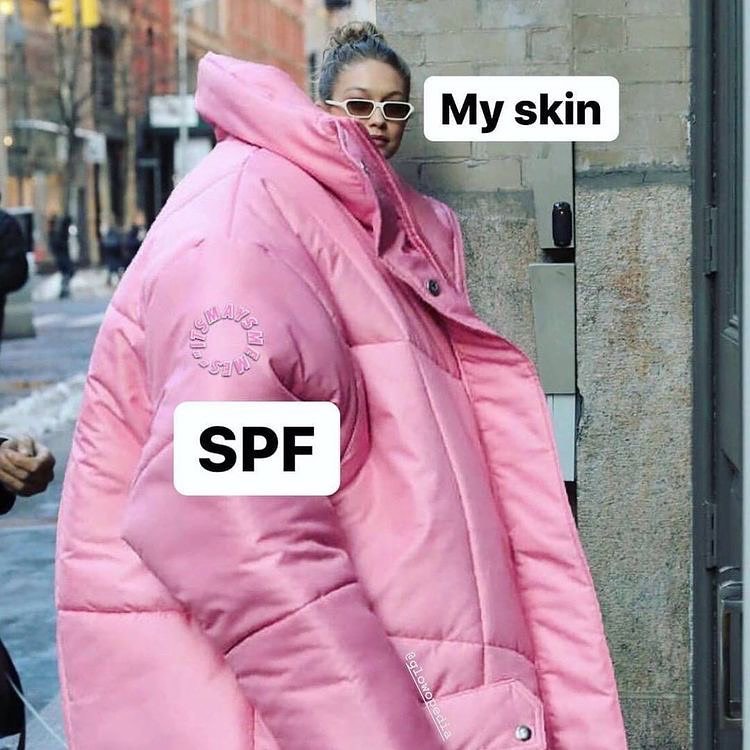Is it really just a mole? This dermatologist teaches us how to spot skin cancer
12 March 2021
Does the blue light from your devices actually cause premature ageing? How much SPF do you *actually* need on the daily? All this and more ahead
According to the data from the official National Cancer Registry, skin cancer accounts for 2.6 per cent of all cancer cases in the country, making it the 10th most common type of cancer in Malaysia. Plus, before you write it off as a problem for boomers and beyond, melanoma—one of the deadliest types of skin cancer—is also the most common type of cancer in young adults under 30. That's right, your youth won't keep you safe from everything.
Basically, the moral of the lesson is that it's worth keeping an eye out for any unusual moles and freckles on your skin. However, this then poses a new challenge: How can you tell if your skin is being suspicious?
To answer all of your sun-burning questions on the topic is Dr. Irene Lee Chew Kek, the consultant dermatologist at Sunway Medical Centre Velocity.
What tell-tale signs should you be looking for in a mole or on the skin?
"It is good practice to examine your moles and skin regularly. The tell signs of skin cancers are changing moles or new pigmentation that displays the following features:

"If in doubt, always consult a doctor."
What are the differences between each type of skin cancer?
"There are actually many types of skin cancer, but there are three types that are more common and more talked about: Malignant melanoma, squamous cell carcinoma and basal cell carcinoma. The term non-melanoma skin cancer refers to other skin cancers that are not malignant melanoma. Although all three arise from skin structures, these three skin cancers are very different in terms of presentation, risk factors, treatment, and prognosis—in addition, each of these skin cancers has a few subtypes which may present differently."

TL;DR? Here's a much quicker summary of the big tell-tale signs:
Malignant melanomas usually arise from a previous mole. It can also arise from normal skin. Most malignant melanomas are pigmented (they look black or dark) and are unusual in terms of shape or with uneven colour.
Squamous cell carcinomas are usually crusted or scaly. They are usually located over sun-exposed areas and may arise from previous scaly skin lesions.
The most common subtype of basal cell carcinoma is usually a dome-shaped, skin-coloured swelling with a central pit. This type of skin cancer is usually locally destructive and is often referred to as a rodent ulcer.
What are the risk factors for skin cancer? When is a person most at-risk of developing skin cancer?
"In general, most skin cancers are related to ultraviolet (UV) exposure, and so most skin cancers occur in overexposed areas of the skin. This includes the face, lips, hands, and lower limbs. However, some specific skin cancers such as acral malignant melanoma may occur at other sites such as the foot.
"There are also genetic factors that are risk factors for skin cancer such as ageing, gender (being male), some preexisting skin conditions, and some genetic conditions.
"The environmental risk factors for skin cancer include smoking, ionising radiation, arsenic, tar, prolonged wound or scarring, and patients with depressed immune systems (such as patients with HIV or on medication that suppresses the immune system). Further, certain infections such as human papillomavirus (HPV)—which causes viral warts—also predisposes patients to skin cancer. are also risk factors."
What preventative measures should people be taking in order to avoid skin cancer?
"The most important preventive measures would be sun protection. Sun protection doesn’t only encompass adequate sunblock; it also entails sun protective habits such as sun avoidance. This includes finding shade or covering up exposed skin with clothing or a wide-brimmed hat. Nowadays, there are materials used for clothing that measure UV protection (Ultraviolet Protection Factor, or UPF)."
How much sunscreen should a person actually be using for sufficient protection and how often should SPF be reapplied?
"I usually recommend sunscreen creams that are SPF50 and above, applied on all sun-exposed skin. In addition, your sunscreen needs to be waterproof if used during water activity or when there is profuse sweating.
"When under the hot sun or excessive UV exposure, it should be reapplied every two hours. In normal circumstances, it should be applied at least every four hours.
"The amount of sunscreen applied is also important for it to be effective. The correct amount for it to be effective is around 2mg per square centimetre. For this, the body is divided into 11 areas which account for nine per cent of the body surface each.
- Head, neck, and face
- Left arm
- Right arm
- Upper back
- Lower back
- Upper front torso
- Lower front torso
- Left upper leg and thigh
- Right upper leg and thigh
- Left lower leg and foot
- Right lower leg and foot
"For each division, two strips of sunscreen on both index and middle fingers from palmar crease to fingertip (the bottom to the top of the finger) is needed."
NOTE: It's important to use the recommended amount of sunscreen to get the full scope of protection. Keep in mind that the SPF factor is proportional to the amount of sunscreen you're using—so, using half of the recommended amount means you're only getting half the SPF.
What are the biggest misconceptions you've heard about skin cancer?
"The biggest misconception is that Asian people do not get skin cancer due to us having darker skin tones. Although having a darker skin tone does offer some protection, it does not make one immune to skin cancer. There are also some skin cancers that are more prevalent in this part of the world, such as acral lentiginous melanoma (a rare type of malignant melanoma that appears on the hands, the soles of the feet, or under the nails. Doesn’t necessarily require sun damage to occur).
"I have also heard myths that blue light from tech devices may cause photoaging and cancer. Currently, there is not enough evidence to support a link between blue light filters on photoaging and cancer. More research is needed to back up the claim."
What does the diagnosis process look like?
"Do make a visit to your nearest doctor for an examination of the suspicious skin lesion. Dermatologists have gadgets such as dermatoscopes to aid them in the diagnosis of skin cancer. From there, if needed, they may biopsy the lesion for confirmation."
What do you wish more people knew about skin cancer?

"Sunblock is the cheapest anti-ageing product for skin cancer and you should start using it as early on as possible because prevention is always better than the cure. On top of that, the correct application technique and amount is important for it to work well.
"Most people assume that just applying once a day is adequate, but it is not—as soon as you are exposed to sunlight, your sunscreen will start breaking down on your skin. It’s how it works."
Back




